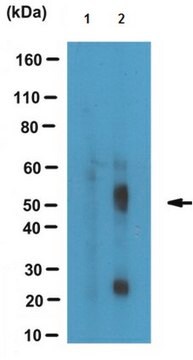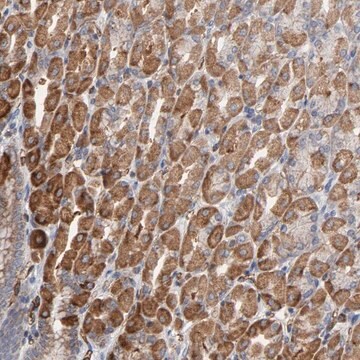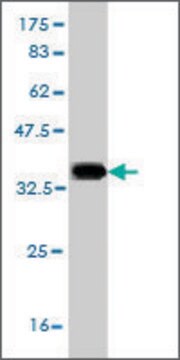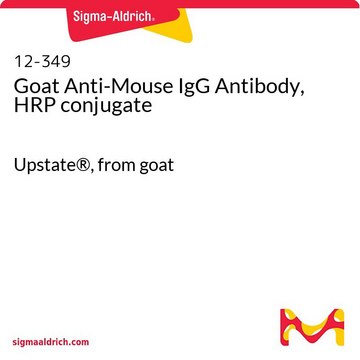MABN679
Anti-BHMT Antibody, clone 8C11H5
ascites fluid, clone 8C11H5, from mouse
Synonym(e):
Betaine--homocysteine S-methyltransferase 1
About This Item
WB
western blot: suitable
Empfohlene Produkte
Biologische Quelle
mouse
Qualitätsniveau
Antikörperform
ascites fluid
Antikörper-Produkttyp
primary antibodies
Klon
8C11H5, monoclonal
Speziesreaktivität
human
Methode(n)
immunohistochemistry: suitable
western blot: suitable
Isotyp
IgG1
NCBI-Hinterlegungsnummer
UniProt-Hinterlegungsnummer
Versandbedingung
wet ice
Posttranslationale Modifikation Target
unmodified
Angaben zum Gen
human ... BHMT(635)
Allgemeine Beschreibung
Betaine--homocysteine S-methyltransferase 1, or betaine-homocysteine methyltransferase (BHMT) is the enzyme that is responsible for the metabolic elimination of betaine and homocysteine via their conversion to dimethylglycine and methionine. As such BHMT is one of a handful of key enzymes keenly responsible for betaine levels. BHMT is expressed at high levels in the human liver and kidney, localizing in the ER and cytoplasmic regions. BHMT expression is largely regulated at the level of the gene. BHMT activity becomes essential when folate-dependent remethylation is impaired because of nutritional deficiencies as it then provides the source for methionine. Deficiencies in BHMT can lead a variety of disorders ranging from vascular disease to neural tube birth defects such as spina bifida, fatty liver disease and cirrhosis all which can be linked to betaine metabolism disorders. EMD-Millipore’s Anti-BHMT mouse monoclonal antibody, clone 635, has been tested in western blots using recombinantly expressed BHMT cDNA and by immunohistochemistry on paraffin embedded human liver tissue samples.
Immunogen
Anwendung
Neurowissenschaft
Entwicklungsneurowissenschaft
Qualität
Western Blotting Analysis: A 1:500 dilution of this antibody detected BHMT in 10 µg of HepG2 cell lysate.
Zielbeschreibung
Verlinkung
Physikalische Form
Lagerung und Haltbarkeit
Handling Recommendations: Upon receipt and prior to removing the cap, centrifuge the vial and gently mix the solution. Aliquot into microcentrifuge tubes and store at -20°C. Avoid repeated freeze/thaw cycles, which may damage IgG and affect product performance.
Hinweis zur Analyse
HepG2 cell lysate
Haftungsausschluss
Sie haben nicht das passende Produkt gefunden?
Probieren Sie unser Produkt-Auswahlhilfe. aus.
Lagerklassenschlüssel
12 - Non Combustible Liquids
WGK
nwg
Flammpunkt (°F)
Not applicable
Flammpunkt (°C)
Not applicable
Analysenzertifikate (COA)
Suchen Sie nach Analysenzertifikate (COA), indem Sie die Lot-/Chargennummer des Produkts eingeben. Lot- und Chargennummern sind auf dem Produktetikett hinter den Wörtern ‘Lot’ oder ‘Batch’ (Lot oder Charge) zu finden.
Besitzen Sie dieses Produkt bereits?
In der Dokumentenbibliothek finden Sie die Dokumentation zu den Produkten, die Sie kürzlich erworben haben.
Unser Team von Wissenschaftlern verfügt über Erfahrung in allen Forschungsbereichen einschließlich Life Science, Materialwissenschaften, chemischer Synthese, Chromatographie, Analytik und vielen mehr..
Setzen Sie sich mit dem technischen Dienst in Verbindung.








